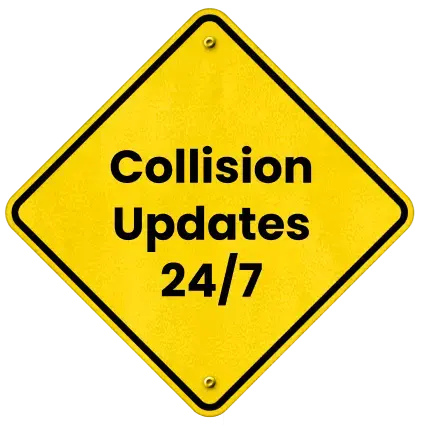
Severe Storms, Hail & Tornado Risks Along I-35


Interstate 35 (I-35) is a major north-south highway running from Texas through Oklahoma, Kansas, and beyond. It carries a mix of commuter, commercial, and long-haul traffic. While it is a critical transportation corridor, I-35 is particularly vulnerable to severe weather, including sudden storms, hail, and tornadoes. These conditions can create dangerous driving situations, increase accident risk, and contribute to secondary collisions. Understanding these hazards and learning how to respond can help drivers navigate I-35 safely.
Severe weather can dramatically affect driving conditions in minutes. Heavy rain reduces visibility, makes roads slippery, and lengthens stopping distances. Hailstorms can damage windshields and impair sightlines, while tornadoes and strong winds can deposit debris on the highway or force lane closures.
Drivers encountering these conditions often face a higher likelihood of collisions. Secondary crashes are a major concern during storms, with vehicles braking suddenly to avoid hazards, swerving to dodge debris, or misjudging wet conditions. High-speed traffic and the presence of commercial trucks amplify the danger.
How Severe Weather Contributes to Accidents on I-35
Storms and extreme weather on I-35 can trigger a wide variety of accident types, creating dangerous conditions for all drivers.
Sudden downpours can drastically reduce visibility and make roads slick within seconds, increasing the likelihood of rear-end collisions and hydroplaning. Hailstorms present another serious hazard, as falling hail can crack windshields, dent vehicles, and force drivers to brake or swerve unexpectedly. Tornadoes or severe wind events can scatter branches, signs, and other debris across the highway, creating obstacles that are difficult to see and avoid. High winds, particularly in open stretches or elevated sections of I-35, can push vehicles off course, putting trucks, SUVs, and motorcycles at especially high risk. Flooding in low-lying areas can accumulate quickly, hiding potholes, stalled vehicles, or other hazards beneath the water’s surface.
Recognizing these weather-related hazards early and adjusting driving behavior, such as reducing speed, increasing following distances, and remaining alert to changing road conditions, can significantly reduce the risk of accidents and help drivers navigate I-35 more safely during extreme weather events.
Practical Tips for Safe Driving in Severe Weather
While not all accidents can be avoided, drivers can reduce their risk with careful planning and defensive driving techniques. Key strategies include:
- Reduce Speed: Slow down to allow more reaction time on wet or slick roads.
- Increase Following Distance: Leave extra space between your vehicle and others to prevent rear-end collisions.
- Use Headlights Correctly: Turn on headlights in rain or low-visibility conditions, but avoid high beams in fog.
- Avoid Sudden Maneuvers: Quick lane changes or hard braking can trigger accidents on slick roads.
- Pull Over Safely if Needed: Rest areas or exits provide safe spots to wait until conditions improve.
- Stay Informed: Use traffic apps and weather alerts to anticipate closures or detours.
- Check Vehicle Condition: Ensure tires, brakes, wipers, and lights are in proper working order.
- Prepare an Emergency Kit: Include water, a flashlight, first-aid supplies, and blankets for extended stops.
These precautions help drivers remain in control during unpredictable weather and reduce the chance of crashes.
I-35 often sees traffic congestion from commuters, tourists, and commercial vehicles. This traffic mix, combined with severe weather, can increase collision risks. Drivers in a rush may not slow down sufficiently for slick roads, while out-of-state drivers or tourists unfamiliar with the highway may make abrupt maneuvers. Trucks require longer stopping distances, so any sudden braking can lead to chain-reaction accidents. Understanding these dynamics allows drivers to anticipate risks and respond safely.
Secondary Crashes and Chain-Reaction Accidents
Storm-related accidents on I-35 often escalate into secondary collisions, creating dangerous chain-reaction scenarios. For instance, a sudden hailstorm or torrential downpour can cause a driver to brake abruptly. Vehicles following too closely or unable to see the hazard in time may collide, triggering multi-vehicle pileups. These risks are particularly high when commercial trucks or high-speed traffic are involved, as the mass and momentum of larger vehicles can amplify damage and injuries.
Common types of chain-reaction accidents include rear-end collisions caused by sudden deceleration, side-swipe accidents from swerving to avoid debris, and multi-vehicle pileups created by poor visibility and wet or slippery road conditions. Unexpected road obstructions, such as fallen tree limbs, loose cargo, or flooding, can further complicate accident scenarios.
To reduce the likelihood of secondary crashes, drivers should maintain defensive driving practices. Keeping a safe following distance provides extra time to react if the vehicle ahead stops suddenly. Reducing speed during low-visibility conditions, like heavy rain, fog, or hail, helps prevent skidding and gives more time to maneuver safely. Staying alert to hazards, including debris, water accumulation, or erratic behavior from other drivers, is critical. Using headlights, hazard lights, and windshield wipers effectively improves visibility for yourself and others. Additionally, anticipating sudden changes in traffic flow near construction zones, exits, or congested areas can help you react calmly rather than abruptly.
By combining these precautions with situational awareness, motorists can significantly reduce the risk of being involved in a secondary or chain-reaction accident during severe weather on I-35.
Responding After a Severe Weather Accident
Accidents during storms on I-35 can be especially dangerous due to reduced visibility, slippery roads, and debris. Responding carefully and systematically is critical to protect yourself and others while preserving important evidence. Here are key steps for victims:
- Seek medical attention immediately: Even seemingly minor injuries, such as whiplash, bruises, or concussions, can worsen if left untreated. Prompt evaluation ensures your health is prioritized and creates a record for insurance or legal claims.
- Document the scene thoroughly: Take multiple photos of all vehicles, skid marks, road conditions, and any visible hazards like debris, standing water, or hail damage. Gather witness statements if possible and exchange contact and insurance information with other drivers. This documentation can be crucial for supporting a claim.
- Report to local authorities: Contact police or highway patrol to file an official accident report. An accurate report provides an authoritative account of the crash, which can be essential for insurance and legal purposes.
- Notify your insurance company promptly: Provide detailed information about the accident, including photos and official reports. Early notification helps streamline claims processing and prevents coverage disputes.
- Consult an experienced attorney: Highway accidents in severe weather can involve complex liability issues. A skilled attorney specializing in I-35 crashes can explain your rights, advise on potential compensation, help gather and preserve evidence, and guide you through the legal process.
Severe weather introduces additional hazards such as flash flooding, strong winds pushing vehicles off course, flying debris from hail or tornadoes, and impaired visibility from heavy rain or fog. Early professional guidance not only ensures that evidence is preserved and recovery options are explored but also gives peace of mind during a stressful time.
Legal support can help victims navigate insurance claims, determine fault in multi-vehicle crashes, and pursue compensation for medical bills, vehicle damage, lost income, and other impacts of the accident. Taking these steps promptly after a severe weather accident is essential to protect your health, legal rights, and financial recovery.
Stay Safe and Seek Legal Guidance on I-35
Severe storms, hail, and tornadoes can create sudden hazards on I-35. Drivers who remain focused, obey traffic laws, and adopt defensive practices can reduce their risk, but even cautious motorists may be affected by others’ negligence.
If you or a loved one has been involved in an I-35 accident, skilled legal professionals can provide essential support. Experienced attorneys specializing in highway accidents can explain your rights, assist with insurance claims, and guide you through the legal process. Early guidance ensures proper support is available, all options for compensation are explored, and peace of mind is restored. Contact an I-35 accident lawyer today for a free consultation.
